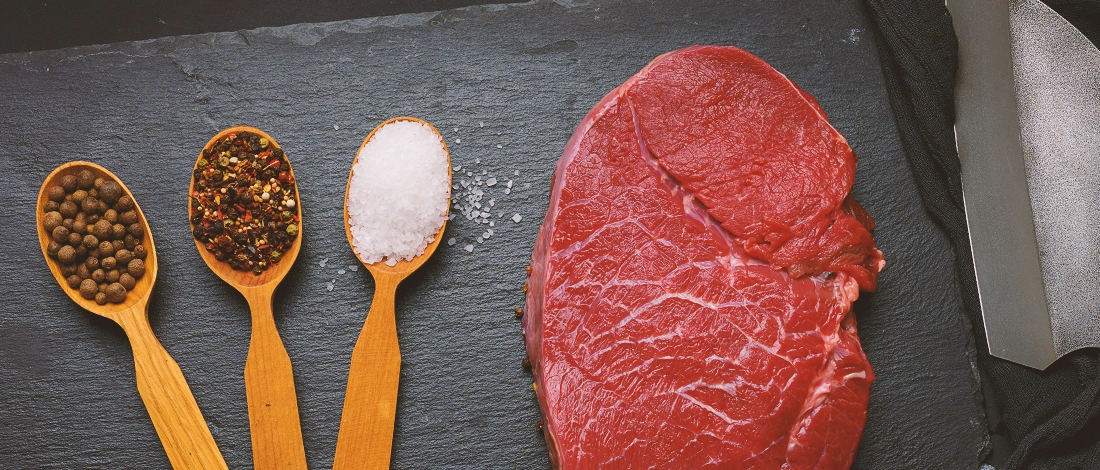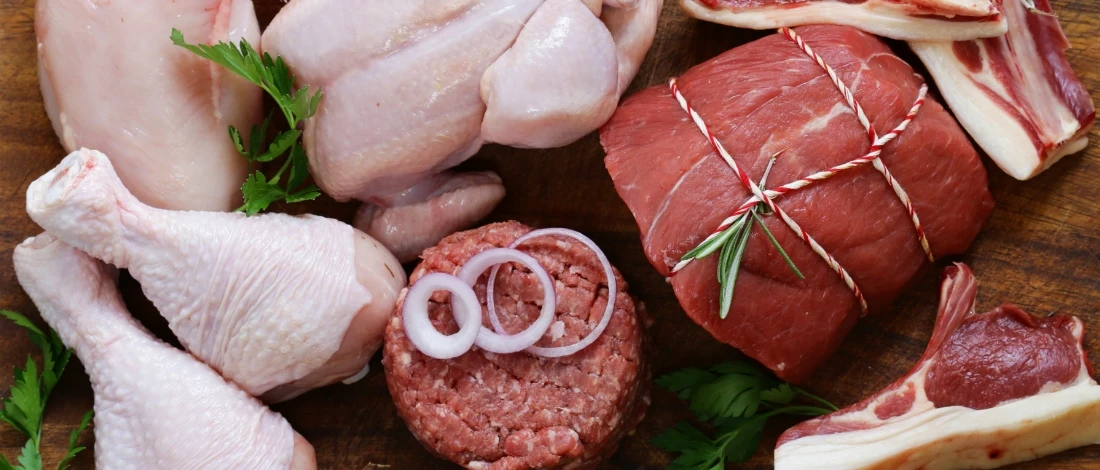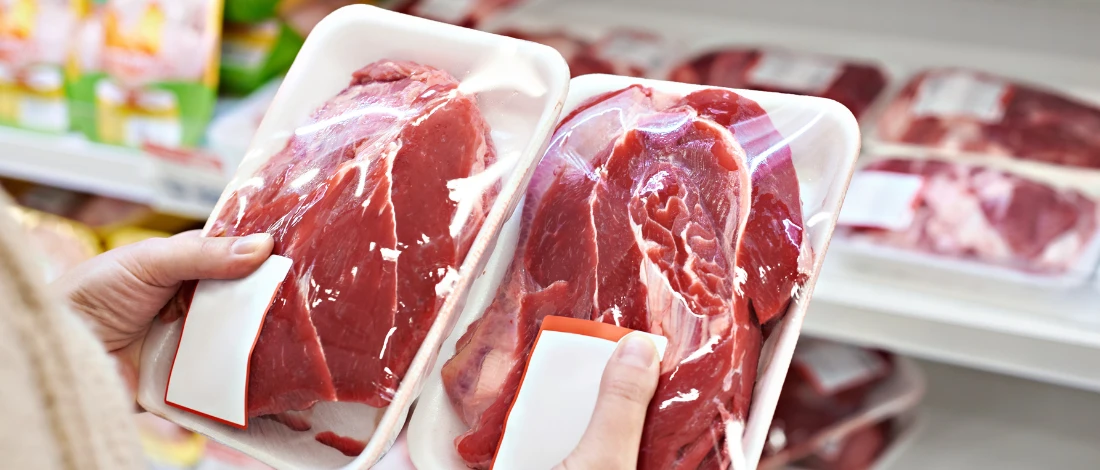Poultry has been a staple in my household for years, but I’ve never really thought if poultry is graded the same way as beef or pork.
For this reason, I’ve made it my mission to dedicate the past two weeks to researching how poultry food products are labeled.
The Carnivore Style' team and I have extensively researched the USDA's guidelines to provide you with the most up-to-date and accurate information on what the different grades of poultry mean.
Here’s what I discovered.
Quick Summary
- The United States Department of Agriculture grades poultry to indicate its quality. The three poultry meat grades are A, B, and C.
- The USDA also has created a poultry classification system based on the age and sex of the bird.
- The USDA Agricultural Marketing Service (AMS) oversees the definitions of terms used to market poultry.
USDA Grading of Poultry
The USDA is responsible for inspecting and grading poultry products to ensure that they are safe for human consumption and accurately reflect their contents.
The USDA has three separate poultry grades: A, B, and C [1].
Poultry meat grades cover the plumpness of the meat, a layer of fat underneath the skin, and even its bone structure.
The three grades are as follows:
USDA Grade A
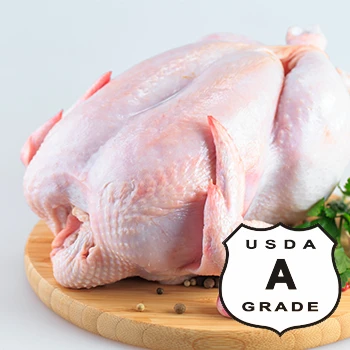
Grade A is the highest of the poultry products grades, and it is retail-level meat typically sold in supermarkets. It has firm flesh with no bruises or blemishes.
The skin is intact, without feathers, and there is a well-developed fat layer within the skin.
There is little to no exposed flesh and no broken bones. There can be only minimal discoloration or freezing defects in the carcass.
This best-quality meat can be used in ready-to-cook poultry food products consisting of parts or individual ready-to-cook carcasses that conform to the highest rating standards.
USDA Grade B
Grade B poultry is of lower quality than Grade A but is still safe for human consumption. In physical features, it may have bruises or other flesh wounds, and the skin may be broken in places.
There can also be some exposed flesh and broken bones. The fat layer within the skin may be thinner than Grade A, and there may be more discoloration or freezing defects.
Grades B and C are not usually found in grocery stores. Butcher shops will often cut up a Grade B bird for parts.
Those individual units that meet the quality standards for Grade A will be sold in the supermarket, and the others will often be used in ground poultry products.
This is still good meat, but the meat-to-bone ratio is lower than Grade A. You typically find that it is not graded as meeting the requirements for ready-to-cook poultry.
USDA Grade C
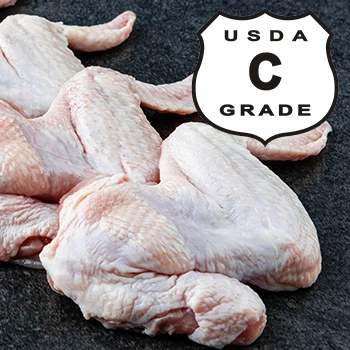
Grade C poultry is the lowest of the three grades and will require further processing into ground poultry products before sale.
The flesh is often bruised or discolored and may have missing or torn skin due to rough post-slaughter handling.
There may be significant amounts of missing parts, exposed flesh, and broken bones. The fat layer within the skin may be nonexistent or very thin.
There may also be significant discoloration or freezing defects.
Grade C poultry is often used in processed products, such as nuggets or patties. It is also frequently chopped or used for sausage or other meat products. It is not as suitable as ready-to-cook poultry.
USDA Poultry Classification

The USDA classifies poultry based on age and sex to create five classes [2].
Here’s how:
- Rock Cornish game hen or Cornish game hen: a chicken younger than five weeks old, of either sex, with a carcass weight of two pounds or less.
- Broiler or fryer: a chicken younger than ten weeks old, of either sex, that is tender-meated with flexible breastbone cartilage and soft, pliable, smooth-textured skin.
- Roaster or roasting chicken: a young chicken between eight and 12 weeks old, of either sex, with a carcass weight of five pounds or more, that is tender-meated with soft, pliable, smooth-textured skin and breastbone cartilage that is somewhat less flexible than that of a broiler or fryer.
- Capon: a neutered male chicken younger than four months old that is tender-meated with soft, pliable, smooth-textured skin.
- Fryer-roaster turkey: an immature turkey younger than twelve weeks old of either sex that is tender-meated with soft, pliable, smooth-textured skin and flexible breastbone cartilage.
These classes allow chefs to get the poultry they need for specific recipes.
For example, a chef looking for a bird to roast would want a roaster, while a chef looking for chicken breasts would prefer a broiler or fryer.
"I don't want food that comes from animals that are caged up and fed antibiotics. I am really suspicious of that kind of production of meat and poultry."
- Alice Waters, American Chef
It is important to note that the USDA's poultry classification system is unrelated to its grading system.
The classification system is used to identify the age and sex of the bird. However, the grading system is used to assess the quality of the meat.
Related Articles:
FAQs
What Does Cage-free Mean?
Cage-free means that the poultry was not raised in a cage. This term is generally only applicable to egg-laying hens, as caging makes it easier to collect the eggs.
What is Naturally-Raised Poultry?
Naturally-raised poultry is a term used by the AMS to describe poultry that was raised without the use of antibiotics or growth hormones.
It also means that the feed for the birds was vegetarian - grains and plants without animal proteins.
Additionally, the feed for the birds has to be organic and free of chemical fertilizers, pesticides, and GMOs.
At Carnivore Style, we know how important it is to understand what’s in the food you're eating. Grading poultry may not be something you think about often, but it can make a difference in the quality of your meals. Check out our other guides to learn more about making smarter meat choices for your carnivore lifestyle.
References:
- https://www.ams.usda.gov/grades-standards/poultry-and-poultry-products-grades-and-standards
- https://www.usda.gov/media/blog/2011/11/17/poultry-classifications-get-21st-century-upgrade


